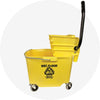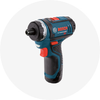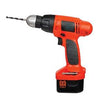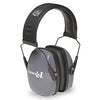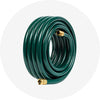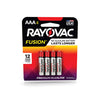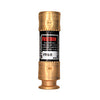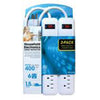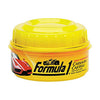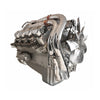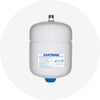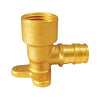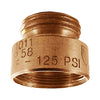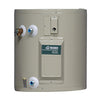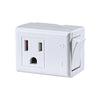Lawn Edging Ideas and Tools
∙ min read
To edge the lawn is to create a barrier between the grass and other areas of your yard, such as a walkway or a flower bed. In some cases, this involves creating a physical border between the two regions. In other cases, it consists in using a lawn edging tool to remove some of the overgrown grass from along the sides of the walkway or flowerbed. Some homeowners use both approaches because removing the overgrown grass makes the physical barriers seem much sharper and more dramatic.

Why Do People Edge Their Lawns?
Have you ever thought that your lawn looks shaggy and overgrown even after you mow it? It can make your yard stand out from the neighbors', but not in the way you want. A lawn mower alone cannot get the clean-cut that an edger tool can because it is too large and bulky, and the grass along the edges may end up looking uneven as a result.There are practical reasons that garden edging may be appropriate for your property. It helps prevent unwanted plants from encroaching on areas you do not want them to go. It can also prevent grass on the sidewalk from becoming a tripping hazard.
Landscape edging helps increase the curb appeal, and your backyard can transform into a lovely oasis. In addition, by keeping the grass on the lawn and out of garden beds, edging reduces the time spent on lawn maintenance.
Nevertheless, the satisfaction comes from taming the lawn that leads many homeowners to take the extra step of garden edging, and the results are well worth the effort.

What Materials Are Used for Lawn Edging Barriers?
When it comes to lawn edging and garden fencing, you have several different options:Landscaping fabric is a durable and cost-effective way of keeping your lawn from growing into your garden and protecting your garden from the elements. It is popular with landscapers for these reasons. However, landscape fabric it's intended to be left in place, so it's not recommended to use it for a vegetable garden or a flower bed.
Recycled plastic barriers are an environmentally friendly option because they keep harmful materials from landfills. In addition, they are durable and become easier to install when combined with bamboo garden stakes.
Metal landscape edging is the most durable option. Other barriers might have to be switched out every few years, but the steel landscape will stand the test of time, enduring harsh weather conditions for years.
Brick edging, concrete edging, resin and stone edging are great for aesthetic landscape edging; however, they don't block the growth or cross-growth of plants or grasses unless they're installed a few inches into the ground. Therefore, this type of landscaping edging is considered a decorative element as a garden border barrier.

Do You Have To Use Edging Tools To Remove Grass Around Borders?
There is an alternative to using edging tools. You can also eliminate unwanted grass along edges chemically using a herbicide such as Spectracide weed and grass killer. After applying the herbicide in unwanted growth, the grass starts to die off within seven to 10 days.
The biggest problem with using a herbicide as a lawn edging tool is that killing off more grass than you intended is effortless. If you do not take care when applying it, the herbicide can drift into areas where you do not want it. Using the chemical along a mulch bed is best to prevent this. Always follow the directions on the package and take steps to prevent weeds from growing after the grass has died.

What Types of Garden Edger Tools Are Available?
There are two main types of edging tools: manual and electric. Also known as a stick edger, a manual edger does not have any motor. There are two varieties of manual edgers. A half-moon edger has a crescent-shaped blade that you insert into the ground and use, like you would a spade, to create the edge and remove the excess grass and dirt.A rotary edger has a round blade shaped like the spur on a cowboy's boot. It is connected to a roller, and when you roll it along your walkways and flower beds, it removes the excess grass. Because manual edgers have few moving parts, they are more durable and do not require much storage space. However, they take more effort to use, and some people find that they are better at maintaining an edge than creating one.
Electric edgers can be battery-powered or plugged into the wall with an extension cord. They offer more power than manual edgers, meaning that they require less effort on your part to use and maybe more effective at creating a new straight edge. However, they do not give off harmful carbon emissions. Contrary to what many people think, an electric edger is not the same as a trimmer, but some tools combine both capabilities.

If you are looking for an edging kit, edging material, a garden hose, a lawn mower, or lawn edging ideas, you are in the right place! Visit our lawn and garden collection to find everything you need for your landscape project or lawn maintenance solutions.
Shop Your Landscaping Accessories & Tools Today


